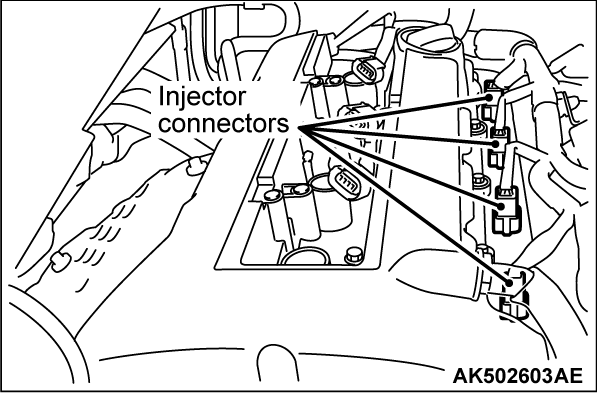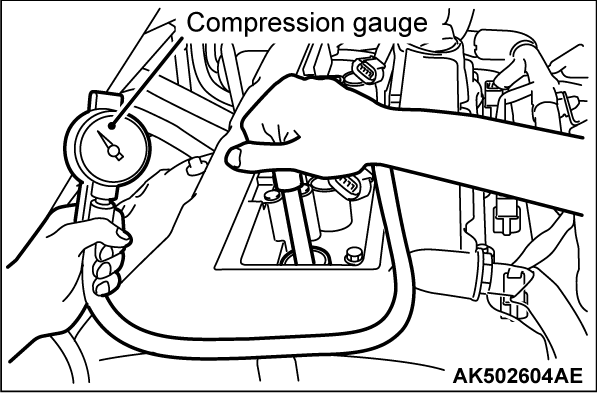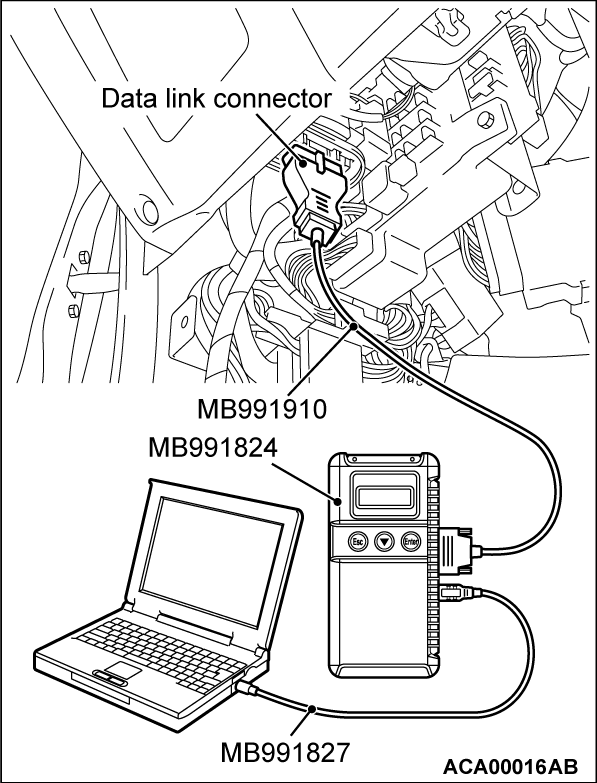COMPRESSION PRESSURE CHECK
Required Special Tool:
- MB991958: Scan Tool (M.U.T.-III Sub Assembly)
- MB991824: V.C.I.
- MB991827: M.U.T.-III USB Cable
- MB991910: M.U.T.-III Main Harness A
1. Before inspection, check that the engine oil, starter and battery are normal. Also, set the vehicle in the following condition:
- Engine coolant temperature: 80 - 95°C (176 - 203°F)
- Lights and all accessories: OFF
- Transaxle: P range
| note | On vehicles for Canada, the headlight, taillight, etc. remain lit even when the lighting switch is in "OFF" position but this is no problem for checks. |
2. Turn the ignition switch to the "LOCK" (OFF) position.
3. Disconnect the connector of the ignition coil, and then remove all the ignition coils and the spark plugs.
4. Disconnect the all of the injector connectors.
| warning | Keep your distance from the spark plug hole when cranking. Oil, fuel, etc., may spray out from the spark plug hole and may cause serious injury. |
5. Cover the spark plug hole with a shop towel etc., after the engine has been cranked, check that no foreign material is adhering to the shop towel.
6. Set compression gauge to one of the spark plug holes.
7. Cranking the engine with the accelerator pedal fully depressed, measure the compression pressure.
- Standard value (at engine speed of 200 r/min): 1,470 kPa (213 psi)
- Limit (at engine speed of 200 r/min): Minimum 1,050 kPa (152 psi)
8. Measure the compression pressure for all the cylinders, and check that the pressure differences of the cylinders are below the limit.
Limit: Maximum 98 kPa (14 psi)
9. If there is a cylinder with compression or a compression difference that is outside the limit, pour a small amount of engine oil through the spark plug hole, and repeat the operations in steps from 6 to 8.
(1) If the compression increases after oil is added, the cause of the malfunction is a worn or damaged piston ring and/or cylinder inner surface.
(2) If the compression does not rise after oil is added, the cause is a burnt or defective valve seat, or pressure is leaking from the gasket.
10. Connect the all of the injector connector.
11. Install the spark plugs and ignition coils.
12. Use the scan tool MB991958 to erase the diagnostic trouble codes.
| note | This will erase the diagnostic trouble code resulting from the injector connectors being disconnected. |
![[Previous]](../../../buttons/fprev.png)
![[Next]](../../../buttons/fnext.png)



